Last Chance to Catch NYC's Holiday Notalgia Train
We met the voices of the NYC subway on our nostalgia ride this weekend!



Central Park has been the lush, green centerpiece of New York City for over 150 years and since its inception, the park has captivated New Yorkers and visitors alike with its picturesque beauty and ability to transport you from the hustle and bustle of the city streets to a natural oasis. The magic of Central Park comes from the ingenuity of its construction, which required a massive amount of gunpowder, its curvy, fairytale-like design, which contains only one straight path, and the many hidden stories it contains.
Even though Central Park is one of the most photographed, filmed, and recognized places on the planet, there are still tidbits of information about the park that may surprise you. Welcome to our new series about the fun facts of New York City’s most iconic places (featuring, well, more “fun” tidbits than our “Secrets of NYC” column). Without further ado, check 10 fun facts about New York City’s most famous park:

Measuring 843 acres, Central Park is larger in land mass than the principality of Monaco which is just under 500 acres large. Despite the large scale of the park in relation to the tiny nation, there are actually parks in New York City that are even bigger including Flushing Meadows-Corona Park in Queens (898 acres) and the Staten Island Greenbelt which comprises a 2,800 acre network of connected parks and trails.
Central Park is on a rectangular plot bounded by Fifth and Eighth Avenues on the west and east, and 59th and 110th streets on the north and south. The perimeter of the park stretches six miles and contains within it twenty-six baseball fields, seven bodies of water, and fifty-eight miles of pathways.
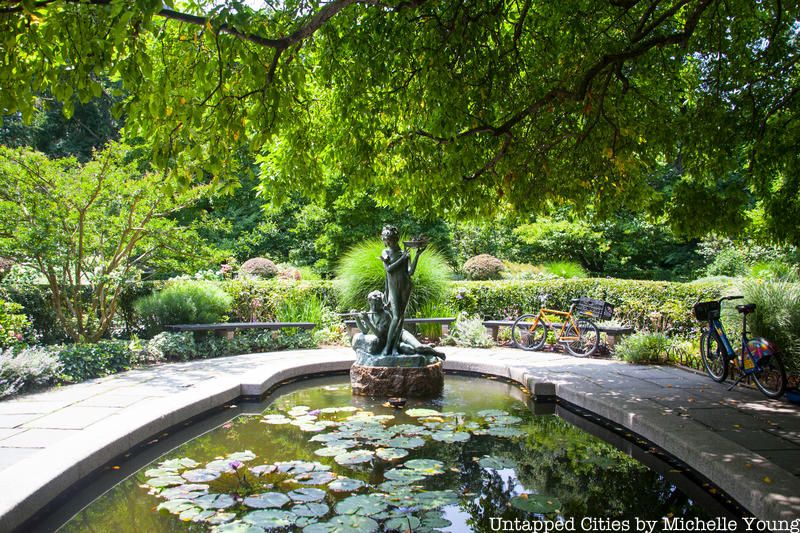
When plans were approved for Central Park in 1853, it was the first major landscaped public park in the entire United States. Wealthy New Yorkers wanted a park like those they saw in European cities like London and Paris. After Central Park was completed in the 1870s, similar urban parks throughout the America’s biggest cities began to pop-up throughout the late-19th century.
Frederick Law Olmsted and architect Calvert Vaux were chosen as the designers of the park after a design competition. The plan they came up with was called the Greensward Plan. The Greensward plan envisioned an artificially crafted environment that mimicked a natural landscape with a mixture of sweeping meadows, large bodies of water, and formal gardens – but not everything in the park was in that original plan.
Before the park was built, the land on which it was constructed was occupied by nearly 2,000 people who were living at the location. Residents of the central Manhattan area the park took over included Irish pig farmers and German gardeners who had built shanties at the site. There was also an entire middle-class African-American settlement, Seneca Village.
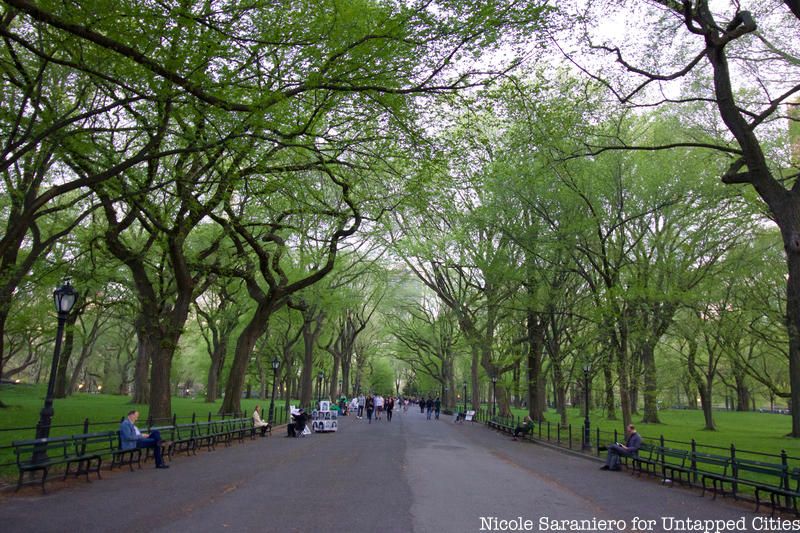
When Calvert and Vaux designed Central Park they did so with a great reverence for natural, curving forms, therefore there is only one intentionally straight path in the entire park. The quarter-mile pedestrian path that runs mid-park from 66th to 72nd Streets known as The Mall is also the widest and one of the most photographed areas of the park.
Another unique feature of The Mall is its quadruple row of American elms, one of the largest and last remaining stands of American Elm trees in North America. The trees put on a vibrant display of yellow leaves in the fall, making The Mall one of the best places to in the park to see foliage.

Central Park’s varying landscapes, gardens and architecture make it a desirable location to shoot movies and television shows. The park has appeared in hundreds of movies, dating all the way back to 1908, and is the most filmed location in the world. From classic rom-coms like When Harry Met Sally and holiday favorites like Elf and Home Alone 2, to action films like The Avengers and I Am Legend, Central Park has been the backdrop of musical numbers, fight scenes, and meet-cutes.
In addition to making appearances on the big screen, Central Park frequently appears in the dozens of television shows that are set and shot in New York City. The park has been used in such as Comedy Central’s Broad City, Gossip Girl, Marvel’s The Defenders, and Maniac on Netflix.

The Alice in Wonderland sculpture inside Central Park is one of the most famous sculptures in New York City and it was designed to be interactive. The whimsical sculpture of fictional characters from Lewis Carroll’s children’s books is meant for children to climb on. According to Bob Spring, the second generation owner of the Modern Art Foundry in Queens where the sculpture was cast, the mushrooms actually serve as supports and sort of steps that allow access to the rest of the sculpture.
The playful piece of art is one of the 29 sculptures installed throughout the park and one of the countless pieces that have taken shape at the Modern Art Foundry. Located in the former carriage house of the famous Steinway Mansion, the foundry has been run for three generations by the Spring family. At the foundry, the expert skills of the craftsmen bring artistic visions to life.

Thanks to the Central Park Zoo, and exotic visitors like the colorful mandarin duck, Central Park serves as a habitat for many animals, some of which have never been seen before. In 2002, scientists discovered a new kind of centipede, an animal so unique that its discovery required the creation of not only a new species, but an entirely new genus. The tiny creature was found in a pile of leaf litter, or a bunching of “broken twigs, fungi and decomposing plant and tree leaves mixed with soil,” which was collected from the North Woods and the Ramble. The new centipede is called Nannarrup hoffmani, or Hoffman’s dwarf centipede, named for Dr. Richard L. Hoffman who studied it.
The centipede is not the only new species to be discovered in Central Park. There was also a new fly discovered on Central Park duck droppings in 2017. Before these most recent discoveries, the last known new species to be discovered in Central Park was a cutworm moth found over 130 years ago during the Golden Age of North American biological classification which lasted from around 1820 and 1920.
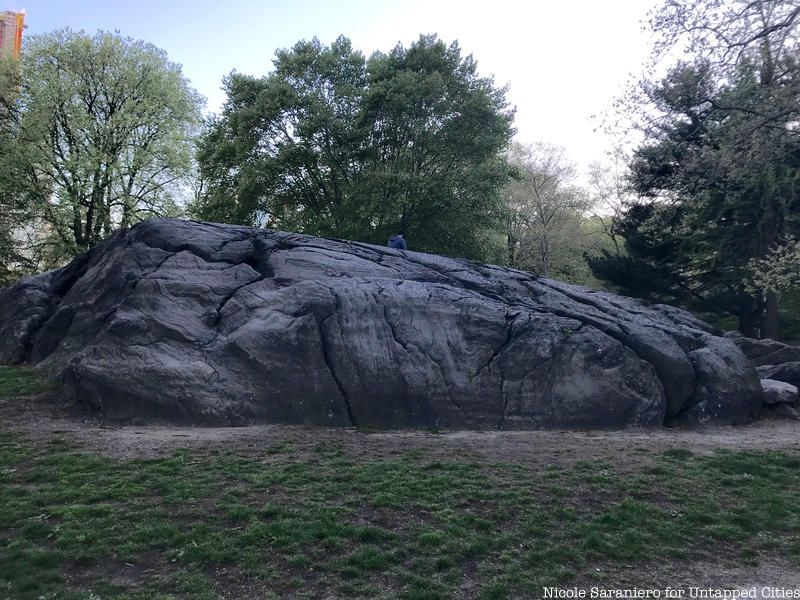
The bedrock of Central Park is made of hard Manhattan Schist and breaking up that rock was a major challenge for construction workers. The rock was so hard it broke tools and workers had to blast through it. In the end, nearly 3 million cubic yards of soil were displaced with the use of 166 tons of gunpowder, more gunpowder than would later be used at the Battle of Gettysburg.
You can see outcroppings of the park’s bedrock throughout the park, especially near Belvedere Castle and Umpire Rock near 63rd Street and Central Park West. These outcroppings were dug up, revealed, and carved by the retreat of the massive Wisconsin Ice Sheet at the end of the last Ice Age around 20,000 years ago.
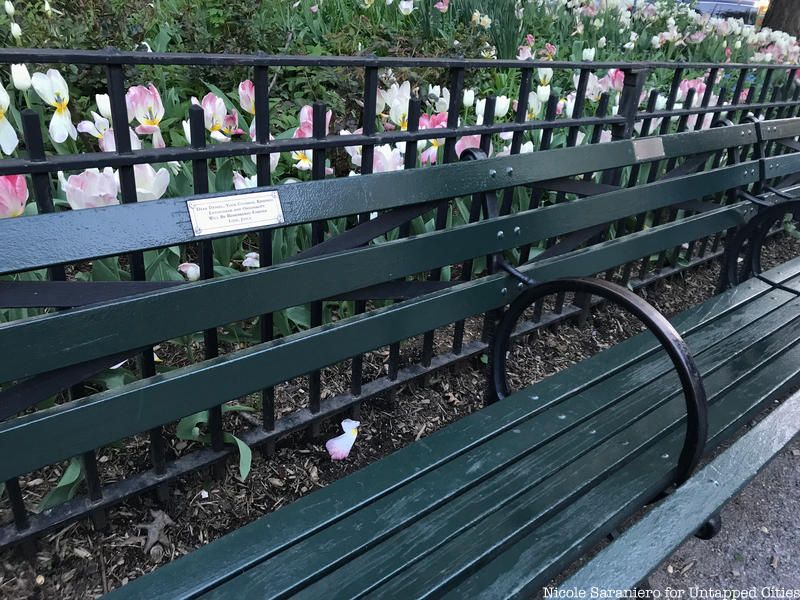
Of Central Park’s more than 9,000 benches, nearly half of them have been adopted and emblazoned with a personalized plaque. The adopt-a-bench program was established in 1986 to help fund the care and maintenance of the park’s landscape and benches. Any person or group can adopt a bench for the price of $10,000. Donors get to choose the location of the bench they want to adopt, though many areas are sold out, and add a 120-character inscription.
From marriage proposals and simple memorials to witty quotes and inside jokes, donors can write virtually anything on the plaque (though the Central Park Conservancy can deny inscriptions it deems inappropriate). Plaques can be customized with four different typefaces and different sized fonts. The New York Times ran a piece in 2016 highlighting some of the most unique bench inscriptions like the mysterious “We Would Make the Same Mistake All Over Again! Vic & Nancy Schiller. Still Best Friends,” and “Two Red Foxes and a Pup,” a plaque that would make sense only to the members of the May family. If you’re not into benches, you can also endow a tree which comes with an engraved paving stone at the southern end of Literary Walk.
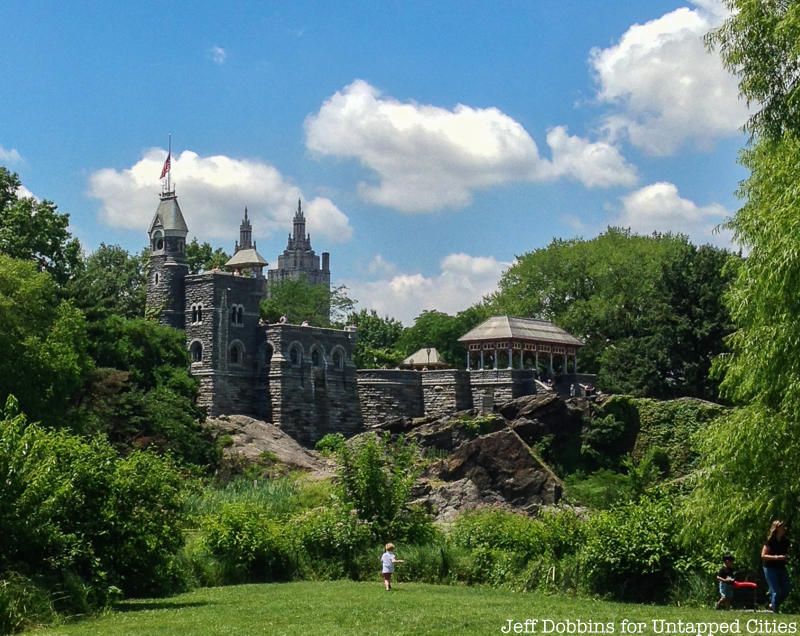
Whenever you hear a weather report that includes the temperature in Central Park, that information is taken from the top of the tower of Belvedere Castle. The National Weather Service has taken measurements from this spot since 1919. At the tower, there are scientific instruments that measure wind speed and direction. Just south of the castle, there are more instruments used to collect other weather data such as rainfall. This data is recorded and then sent to the weather service’s forecast office at Brookhaven National Library on Long Island.
Belvedere Castle, which was not part of the original Greensward Plan, was built in 1869 out of Manhattan schist. It is located around 79th Street. The Castle has been closed for renovations since February 2018 but is set to re-open late this spring.
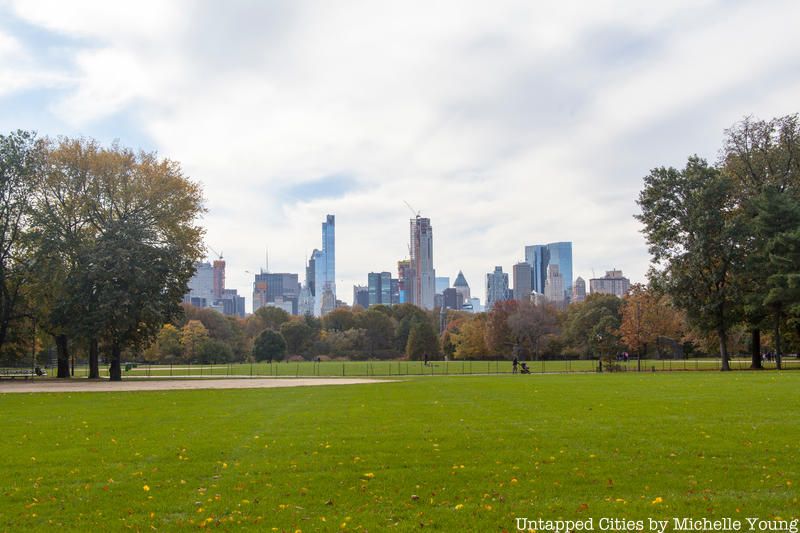
Today, the Great Lawn is 55 acres of lush green space, but it looked very different during the first few decades of the park’s existence. From 1842 until 1931 the space where Great Lawn is now, the geographical center of Central Park, was the York Hill receiving reservoir. The reservoir received fresh water from Westchester’s Croton River through the Croton Aqueduct system. which then traveled on to the distributing reservoir on the site of today’s Bryant Park.
When the reservoir was decommissioned in 1931, it was filled in with excavation material from Rockefeller Center and the Eighth Avenue subway. Before it was decided to go with Olmsted and Vaux’s original vision of a rural retreat, proposals were submitted to use the space for everything from a World War I memorial to a space for an airport landing pad. Eventually, in 1937 an oval lawn was created and baseball diamonds started popping up in the 1950s.
You can still see elements of the reservoir when you walk by the 86th Street police station inside the park, one of the many historic ruins and remnants inside Central Park. You can even see a rock wall from the reservoir inside the new police station’s conference room.
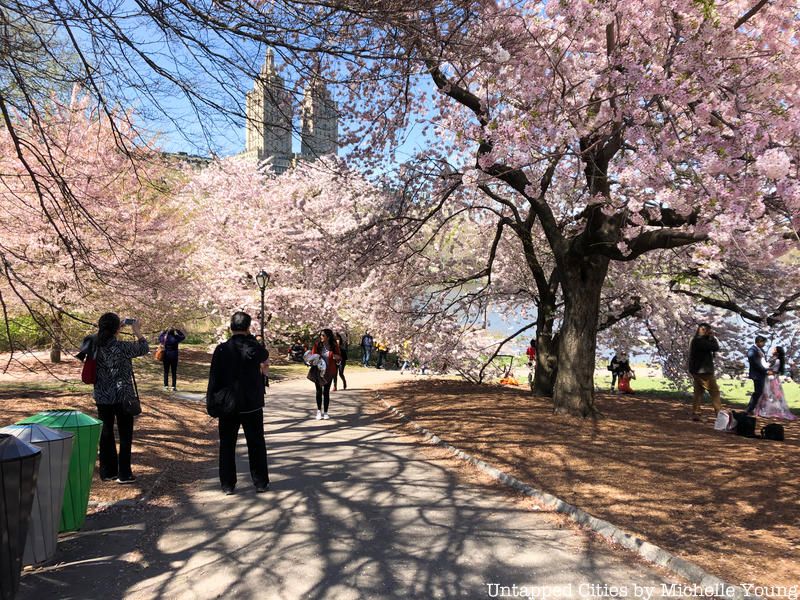
Planted throughout Central Park there are over 20,000 trees. Those thousands of trees come in dozens of different varieties from Elms, Black Oaks, and Gingkos to Star Magnolias, Red Maples, and Atlas Cedars. Not only are these trees pretty to look at, but they are good for the environment and the health of New Yorkers.
According to the Central Park Conservancy, in one year, just a single mature tree will absorb more than forty-eight pounds of carbon dioxide from the atmosphere and convert it into oxygen. Multiply that times 20,000 and it adds up to roughly one million pounds of carbon dioxide removed from the city’s air each year. This is comparable to the amount of greenhouse gas produced by an average passenger car driving 1,109,028 miles, the amount of electricity used by 79.1 homes for one year, or 57,838,615 smartphone charges.
Subscribe to our newsletter